The bounty of the sea, and a taste of home cooking
When it comes to treats while on the road, there’s nothing like local flavors. And it would be no exaggeration to say that we found just that in an encounter with some old dames. With that in mind, our trip to Kisarazu started in search of the genuine homemade flavor of the local delicacy, sushi rolls.
It’s no secret that the local Bōsō fare is futomaki, or thick rolls of maki-zushi. This stands to reason given that Edomae-Nori seaweed is one of Kisarazu’s famed products. Popping into the women’s section of the Kisarazu chapter of Japan Agriculture (JA), a local matriarch informs us that, “when we were kids, it was normal for us to eat teppo maki (“gun barrel maki”) as a snack, rather than o-nigiri.”
The original is a simple version rolled in seaweed with a succulent core of clams broiled in soy and dried bonito soy sauce, which was a staple among fisherman who could grasp and scoff them in one hand while out at sea.
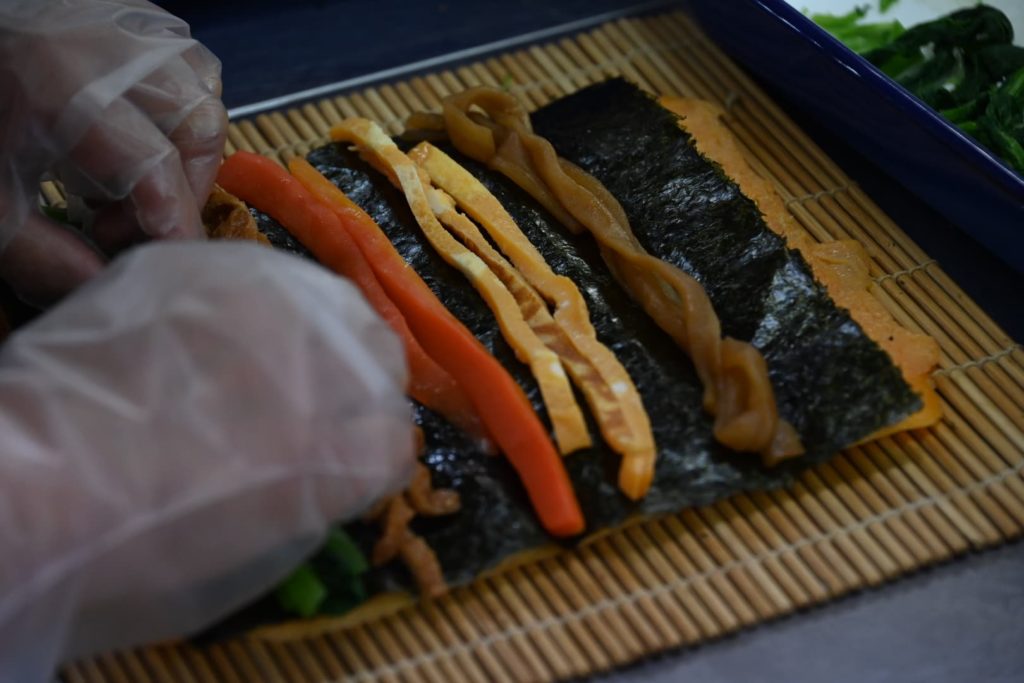
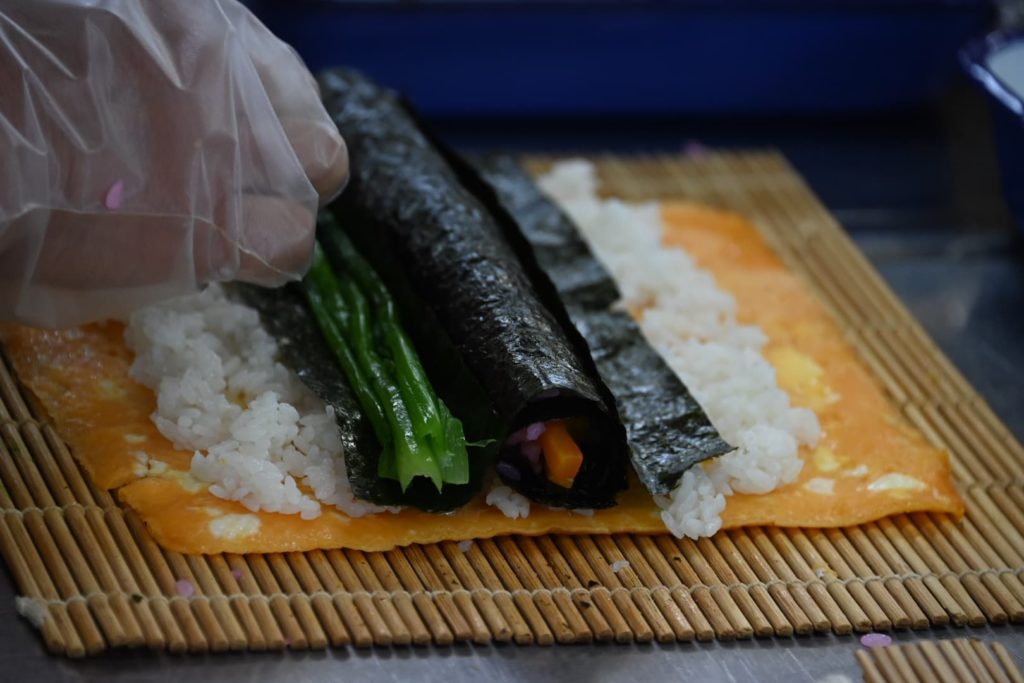
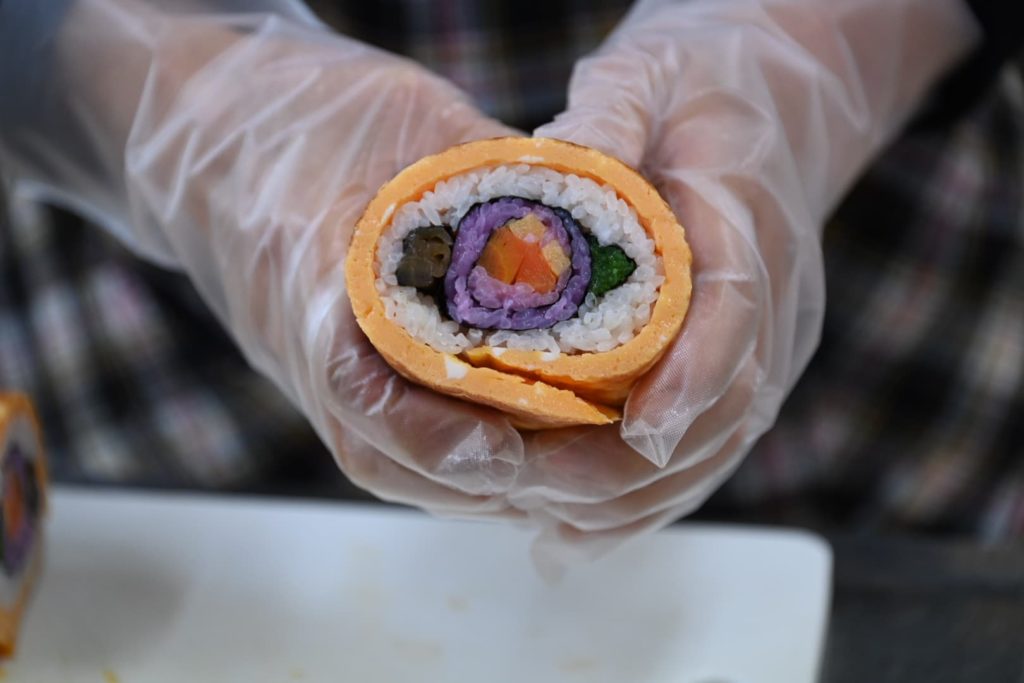
The futomaki sushi that came from this became a staple treat at important ceremonial occasions in family relationships, and it’s fun to observe the various patterns and versions unique to households and communities. Each feature seasoned gourd roll, egg and carrot as ingredients with rice and nori seaweed. Changing the combinations and mode of rolling results in a plethora of patterns including flowers and animals. Skilled in the art, the ladies chat away while producing one perfect roll after another. The joy of watching their craft is only surpassed by the wholesome flavor that shortly greets our stomachs.
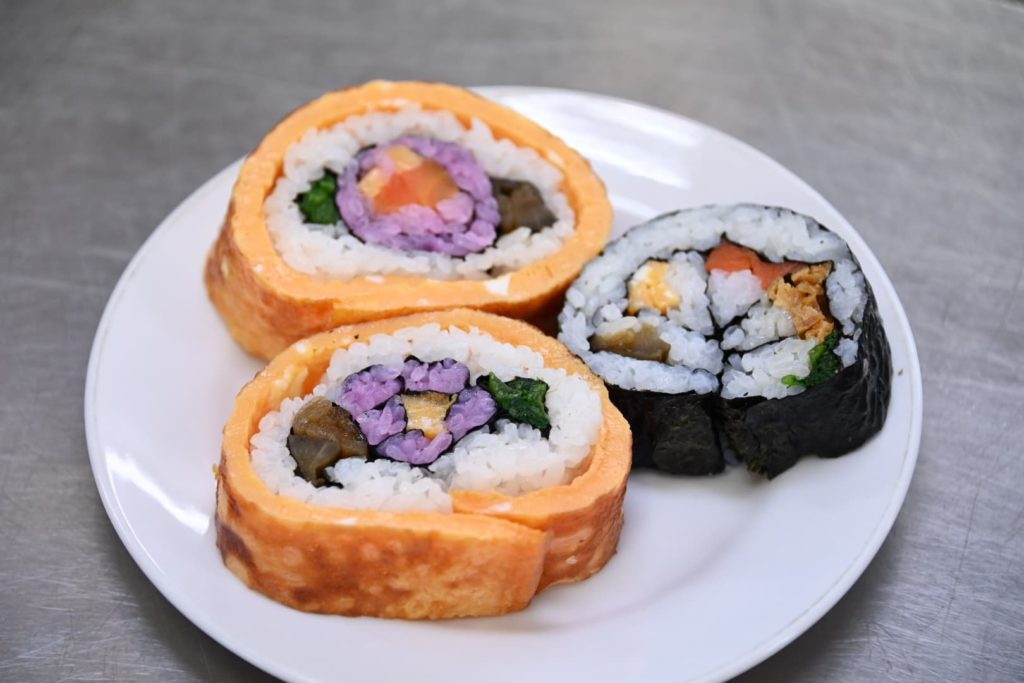
We had arranged to talk to someone who makes the nori used for rolling these famous futomaki, and headed to Kaneda fishing port to meet seaweed fisherman Masaomi Saito and his colleague Akira Yahagi, in charge of processing. Masataka has followed in his father’s footsteps as a nori fisherman, in Kaneda where the traditional method of farming nori using support pillars has been passed down through the ages. Early autumn is the season for setting these pillar fences in the sea, with netting between each pillar to produce seeds for refrigerating. Winter heralds the production season for nori, which Masataka waxes lyrical about – “Sweet and aromatic, it melts in the mouth. Roast it over the fire and take a bite, it’s out of this world”.
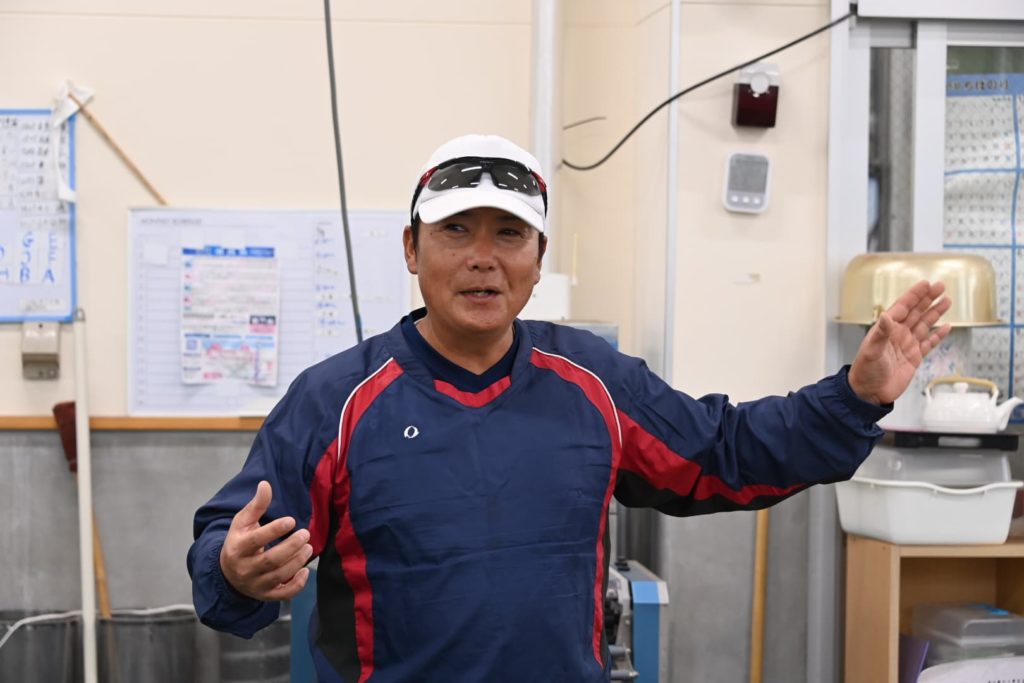
Many rivers in the Kanto Region pour into Tokyo Bay which provide the wealth of nutriments required for cultivating nori, which is bursting with umami thanks to enjoying plentiful photosynthesis due to the seemingly perpetual blue skies Another classical feature of Chiba nori was the sight of fisherman getting in and out of the sea to change the nori netting in order to increase the yield of soft seaweed sprouts. After picking off the carefully reared seaweed, it’s Noboru’s turn. While this used to involve a full family effort that required getting into the freezing sea and plucking by hand and then processing at home, these days the plucking is done by a ship and processing at the harbor, to ensure the sustainable future of both nori fisherman and their delicious seaweed.
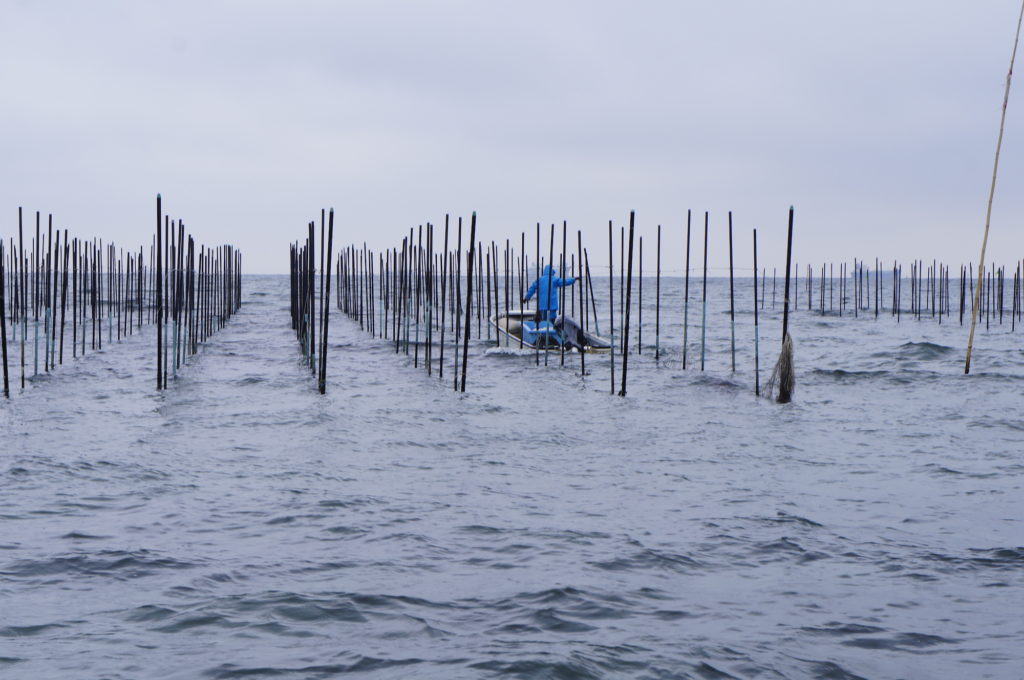

Ties run deep with other fishing ports, fisherman and cooperatives within the prefecture. “The AOMAZE nori we harvest at the end of the year is a cut above”. Hearing these words, I am counting the days till I can get hold of this gem. As we leave the fishing harbor, the combination of Masataka and Noboru brings a smile, and we can’t help feeling that the future looks bright for Edomae Chiba seaweed.












